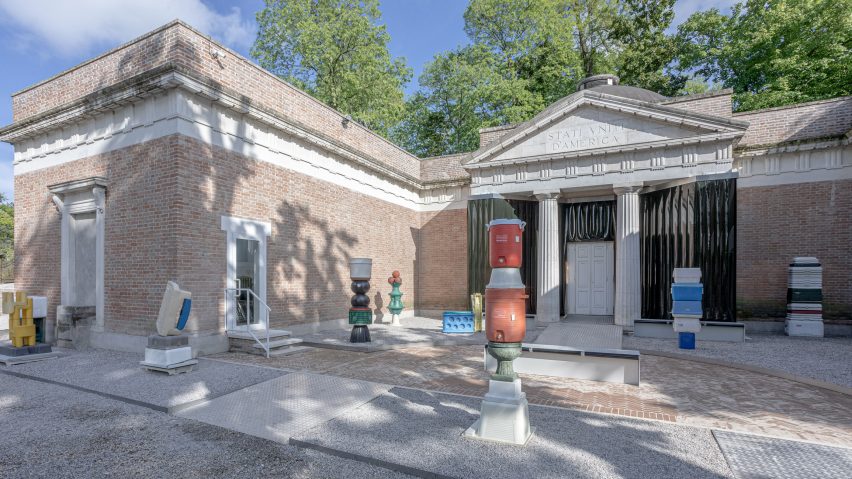
US Pavilion at Venice Architecture Biennale urges visitors to question plastic dependency
Mankind's relationship to single-use plastics is the focus of the US Pavilion at this year's Venice Architecture Biennale, which is revealed exclusively online as part of a day of pavilion openings.
Named Everlasting Plastics, the exhibition has been curated by SPACES executive director Tizziana Baldenebro and Museum of Contemporary Art Cleveland curator Lauren Leving.
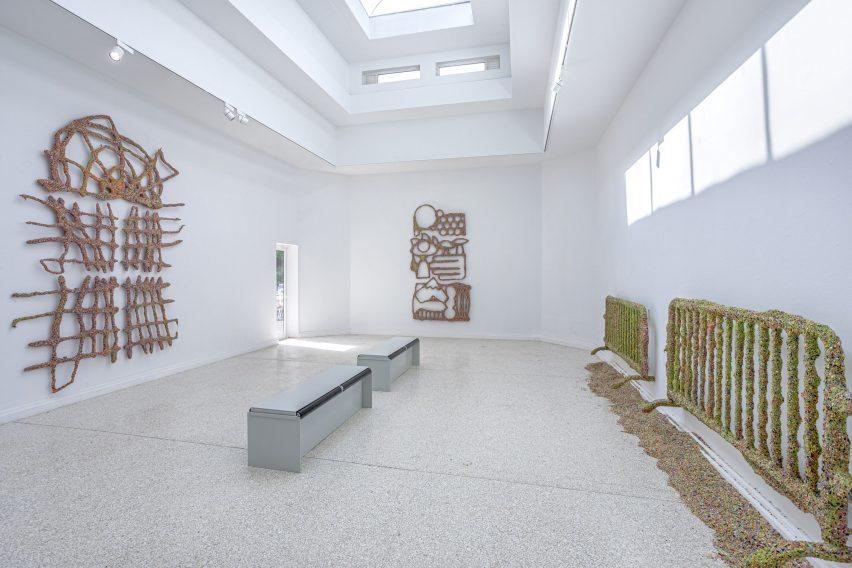
It aims to shine a light on how the planet became dependent on plastics, despite the material's relatively short history.
The pavilion also examines the positives of plastics, such as its potential as a "life-saving material in healthcare industries", while spotlighting the new shift away from the "culture of disposability" that is reframing plastic waste as a valuable resource.
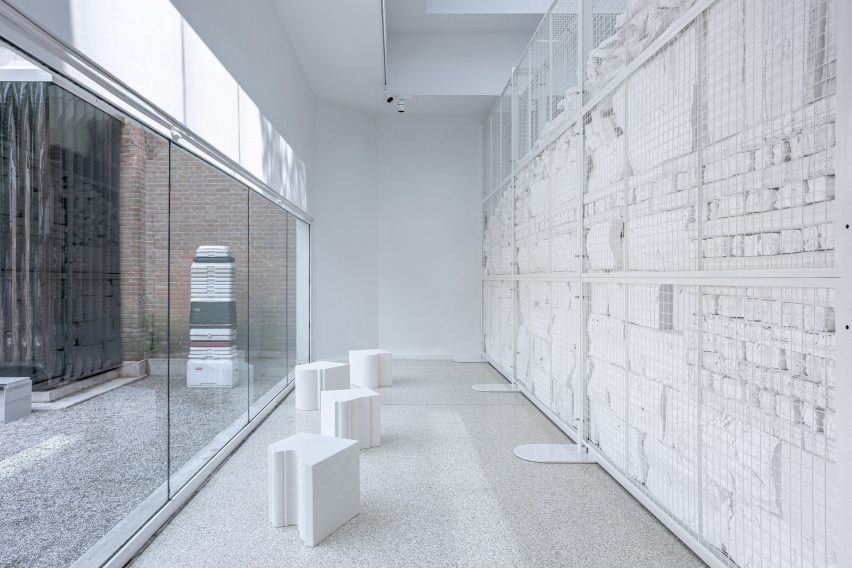
"While plastic is a globally-ubiquitous material, it hides in plain sight," said curators Baldenebro and Leving.
"It insulates our homes, serves as a productive barrier, and acts as a carrier – both as a vessel and as a virus," they told Dezeen.
"Everlasting Plastics opens up a conversation about dependency on the material and challenges our fixation on disposability, urging us to question our relationships with plastic and how we can embrace reuse."
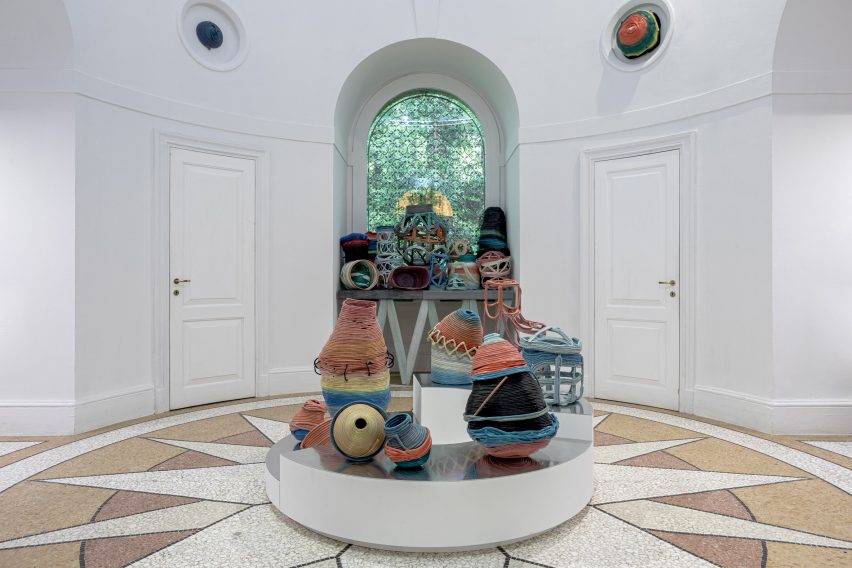
Inside, the pavilion features the work of five designers that explore these themes. These are architectural designer Xavi Aguirre, designer Simon Anton, architect Ang Li, artist Norman Teague, and artist Lauren Yeager.
"They each think about plastic materiality and the meaning of plasticity in thoughtful, innovative ways and it has been an honor to support them as they develop new work for this project," said the curators.
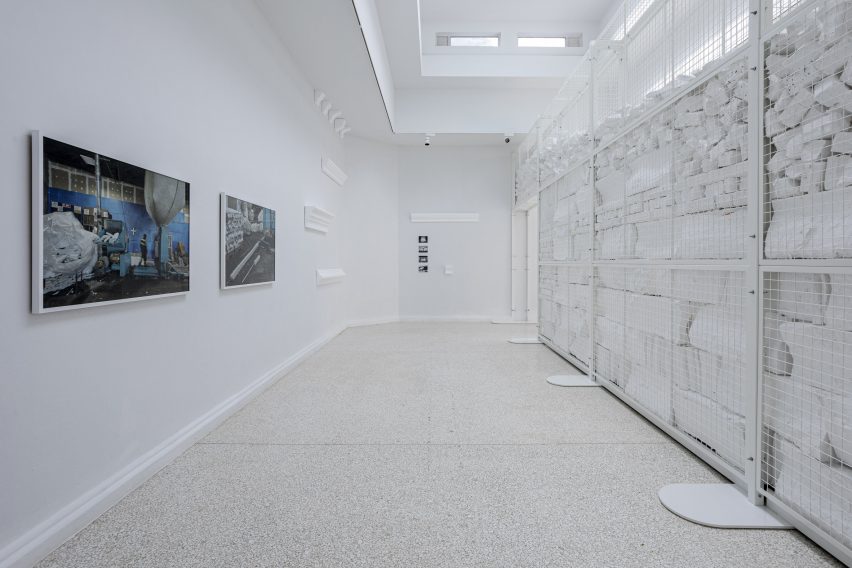
According to the duo, each of these exhibits is hoped to encourage visitors to examine their own relationship to plastic and open their eyes to how plastic waste can be a "rich resource".
"Everlasting Plastics challenges visitors' understanding of the material and inspire a breadth of methodologies to utilize and transform the ways in which we engage with refuse," said Baldenebro and Leving.
"We have to learn to live with the material realities of our waste systems and we hope visitors envision new ways to exist in this tension."
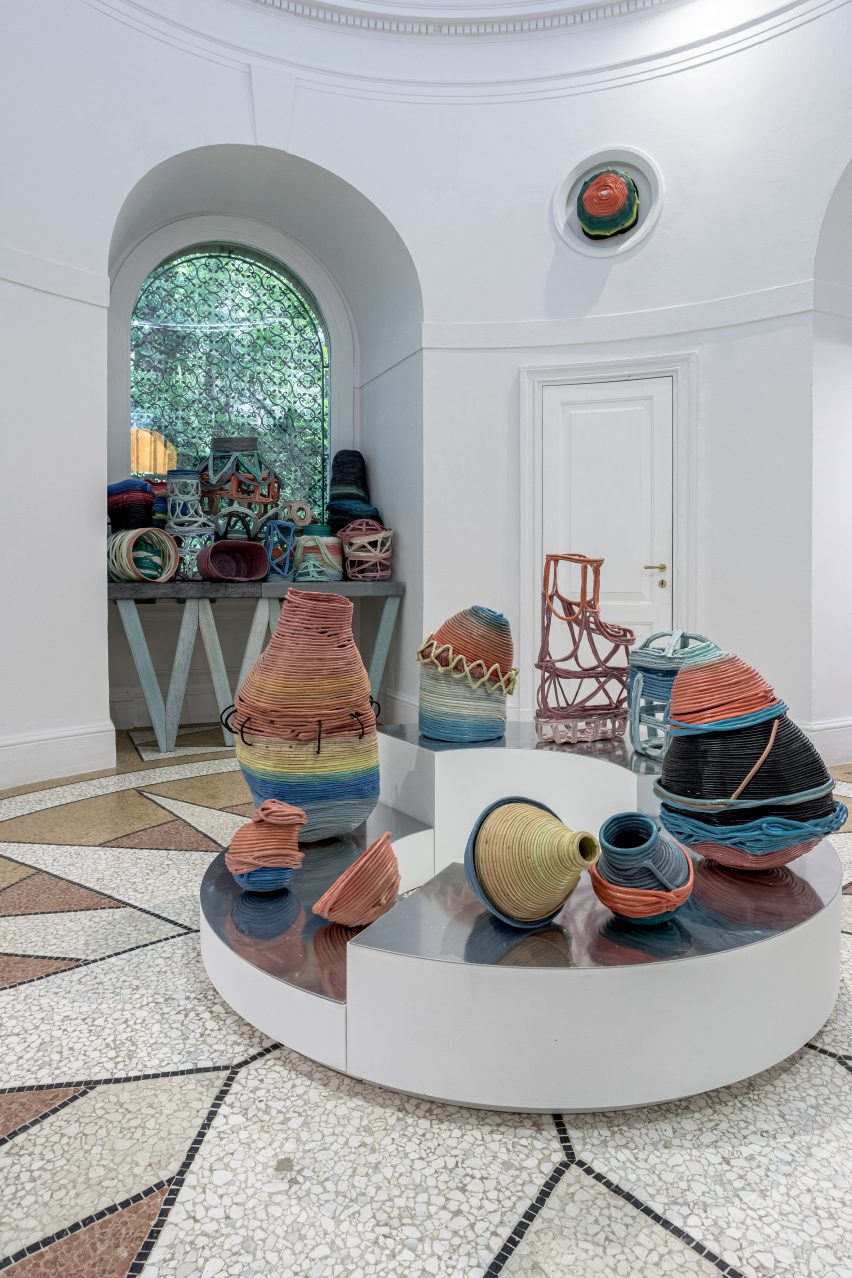
Among the highlights of the US Pavilion is artist Teague's contribution, which sees him use "Everlasting Plastics as a laboratory for his practice".
Instead of using wood – the material for which he is known and specialises in – Teague adopts plastics in an installation that explores the global attitudes towards recycling of waste.
"While he has received a lot of acclaim for his work with wood, we've challenged him for this installation to work with recycled plastic," said the curators.
"His work considers the Global South and the Global North through a diasporic lens and critique Western extractivist practices in the Global South."
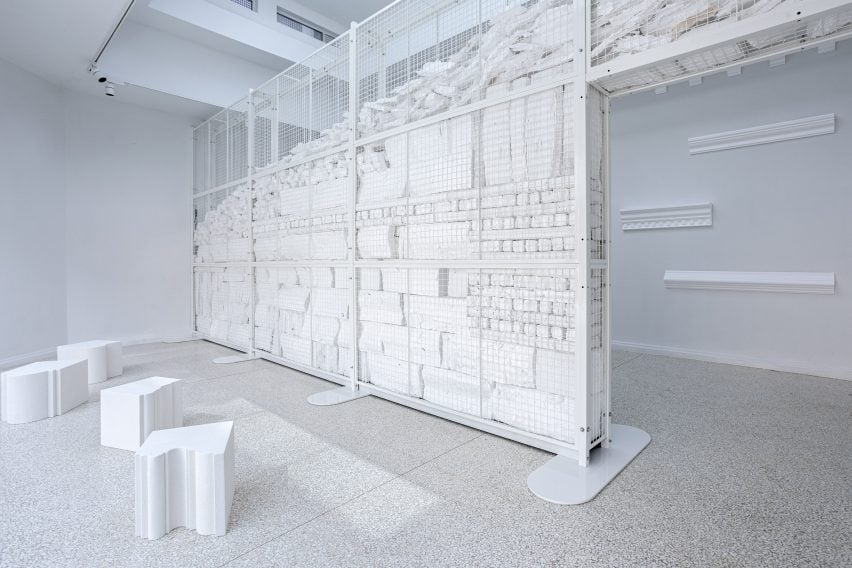
Alongside Teague, Li is showcasing an installation made of expanded polystyrene that highlights "afterlives of plastic", while Aguirre presents a two-room installation examining "our bodily relationships with plastic".
Anton has created archaeological-like structures made of shredded plastic, while Yeager uses waste material to create an installation intended to evoke a feeling of calm in the same way that designer and artist Isamu Noguchi's work does.
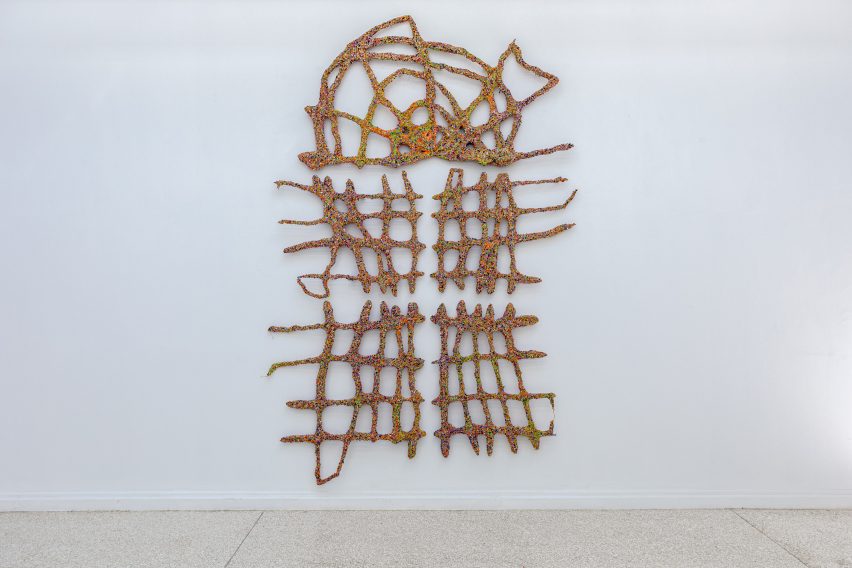
Consideration of the US Pavilion's environmental footprint formed a key part of its development this year, Baldenebro and Leving said. This aligns with the ambitions of the Venice Architecture Biennale's organisers that are aiming for carbon neutrality at this year's event.
"We are keenly aware that exhibitions of all scales produce waste and this has always been at the forefront of our minds as we develop Everlasting Plastics," they explained.
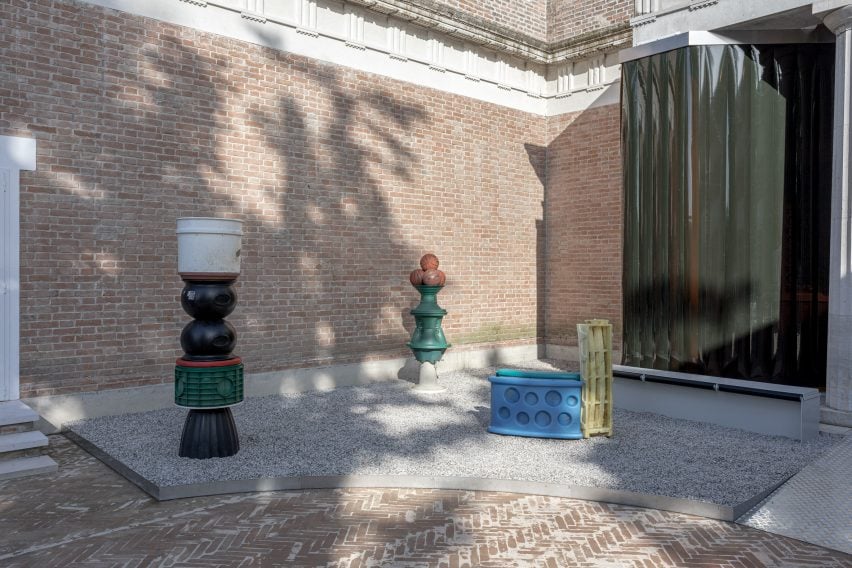
Among the measures taken to reduce the include shipping materials by ocean freight as opposed to aeroplanes, and working with people based in Venice to complete it.
"Collaborating with individuals who live and work here was essential to the success of our project," the duo concluded.
"Even our didactics, which were printed [in Venice], are on metal so that we can reuse them in future iterations of the project and serve as an alternative to the single-use vinyl wall text we often see in exhibition spaces."
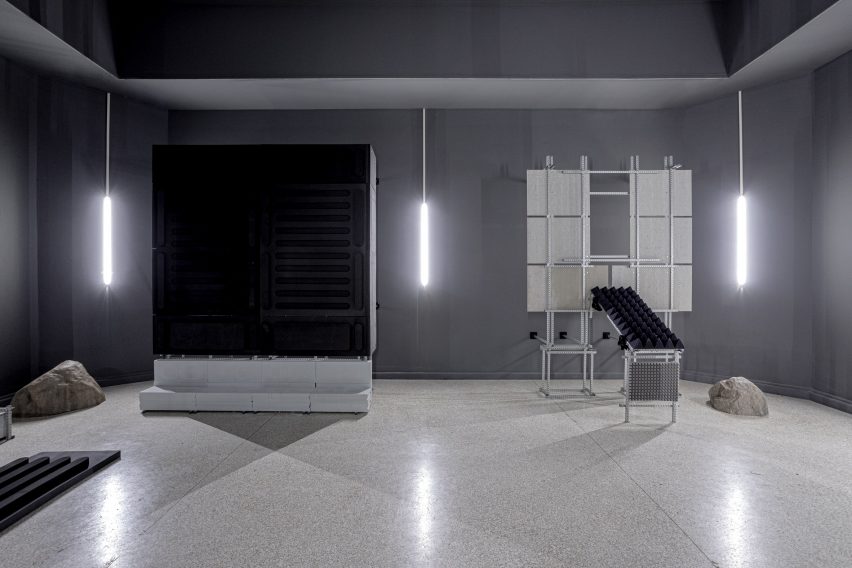
The US Pavilion is one of several that will be opened exclusively on Dezeen during the Venice Architecture Biennale 2023. Other pavilions that were seen first on Dezeen include the Danish pavilion. See all the top pavilions from the last edition of the biennale here.
The photography is by ReportArch/Andrea Ferro photography.
Dezeen is live reporting from the Venice Architecture Biennale, which takes place from 20 May to 26 November 2023. See Dezeen Events Guide for all the latest information you need to know to attend the event, as well as a list of other architecture and design events taking place around the world.